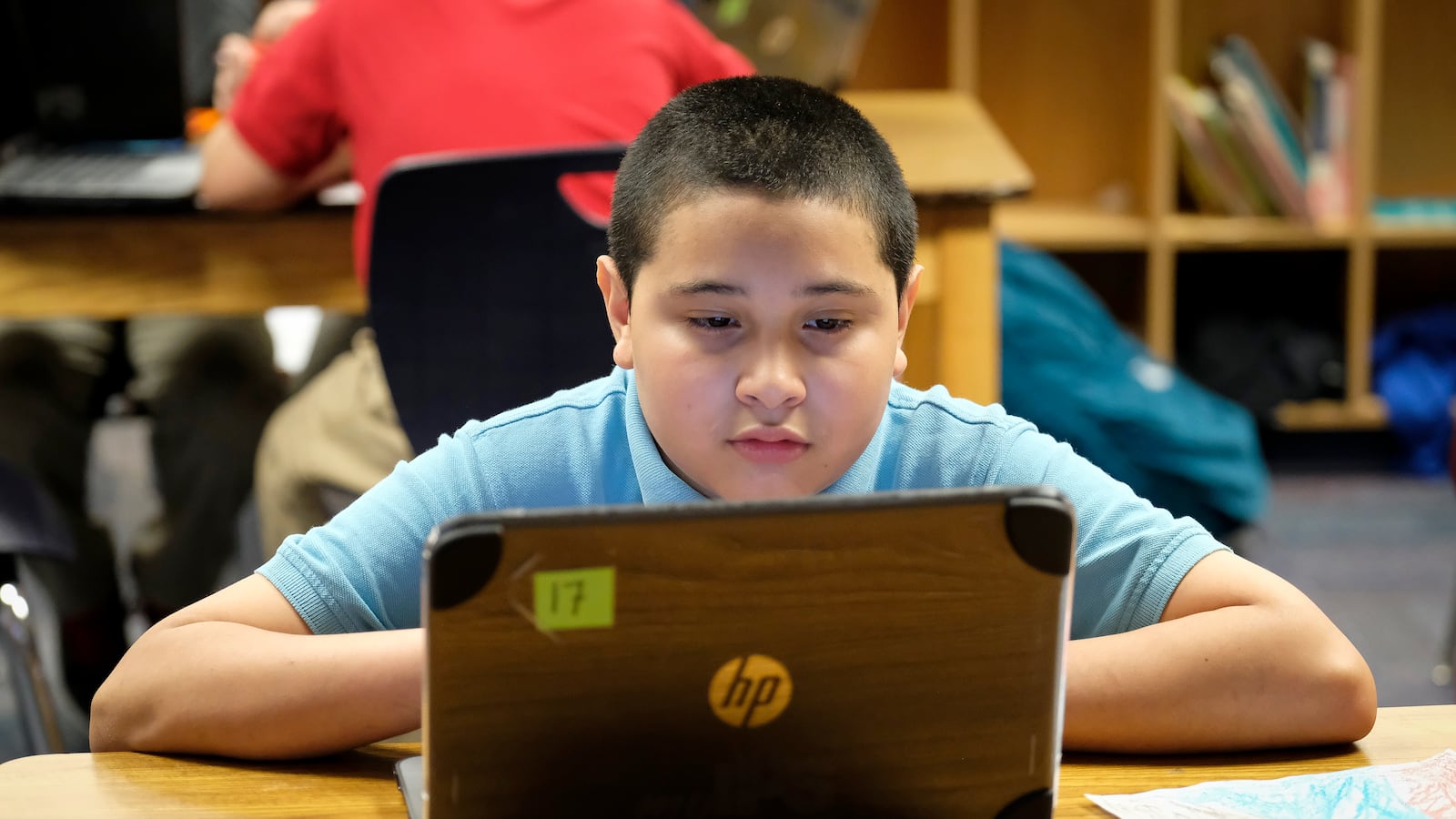As schools across Indiana face closures that could last the remainder of the academic year, KIPP Indy is trying to address a common conundrum: How to make sure students have the devices and internet access they need for online education.
“It’s the question of the day,” said Executive Director Andy Seibert.
About 80% of Indiana students attend districts that send home devices in some grades, according to a survey from the Indiana Department of Education. But the level of access varies widely. Many districts hesitate to send devices home with young children because of concerns they will be lost or damaged, particularly in low-income communities where parents would struggle to pay for replacements.
Some schools that previously kept devices on campus are now sending them home with students. Others are helping families to sign up for free internet.
In Lawrence Township, an Indianapolis district with about 16,000 students, middle and high school students already take devices home. After the district closed due to the new coronavirus, officials told parents that fifth- and sixth-graders could take Chromebooks home, said Troy Knoderer, the district’s chief academic officer. In just two hours on Thursday, more than 1,300 families picked up devices.
“There were some families that had a device … but they had three kids at home, and all three kids are doing e-learning,” Knoderer said. “Our community needs us to provide as much access as we can.”
At 21st Century Charter School in Gary, younger students haven’t been allowed to take devices home with them, network president Kevin Teasley said. But now the charter school wants to send Chromebooks home with every student and doesn’t have enough devices to do so.
Anderson Community Schools has enough Chromebooks, interim Superintendent and Chief Operating Officer Joe Cronk told Chalkbeat. But because students in grades 3-6 usually leave their Chromebooks at school, the chargers are wired into carts and it would take too much time to break the carts apart. That means officials can’t hand out the devices for home use.
At Matchbook Learning at School 63 in Indianapolis, where almost all 612 students come from low-income families, devices typically stay at school except in special circumstances, said CEO Amy Swann. In part, that’s because when students at a previous Matchbook campus in New Jersey took home devices, “it made them a target” for robbery, she said.
The school is considering providing devices to students. But Swann said some families have tablets, smartphones, and even Xboxes students can use to meet with teachers and do schoolwork. Her first concern is ensuring families have internet access.
Indiana educators agree that ensuring families have internet access is an urgent problem. About 83% of Indiana households have internet, according to data from the 2018 American Community Survey. The state’s poorest families, however, are far less likely to have internet. More than 94% of households with annual incomes $75,000 or above have broadband, while that number drops to 61% of households with incomes below $20,000.
The suburban district of Hamilton Southeastern, which has about 22,000 students, is in a good position to provide remote education. All the students have devices, and staff made sure the elementary schoolers who typically leave their iPads at school took them home ahead of the closure, said Director of Educational Technology Jeff Harrison.
Still, Harrison is worried about internet access for as many as 900 families. The schools are addressing that gap by offering internet in three school parking lots, where families can upload and download school work, he said.
Educators have to be flexible and patient at this unusual moment, Harrison said. “We have families without WiFi or reliable WiFi, and so we try to work with those families on alternative options.”

